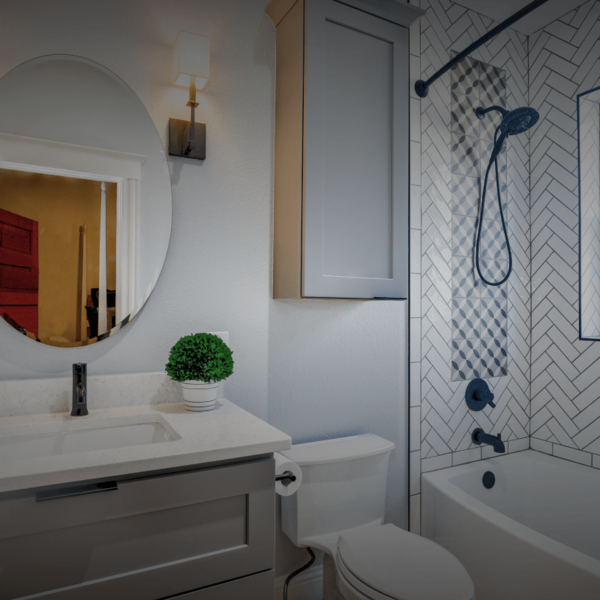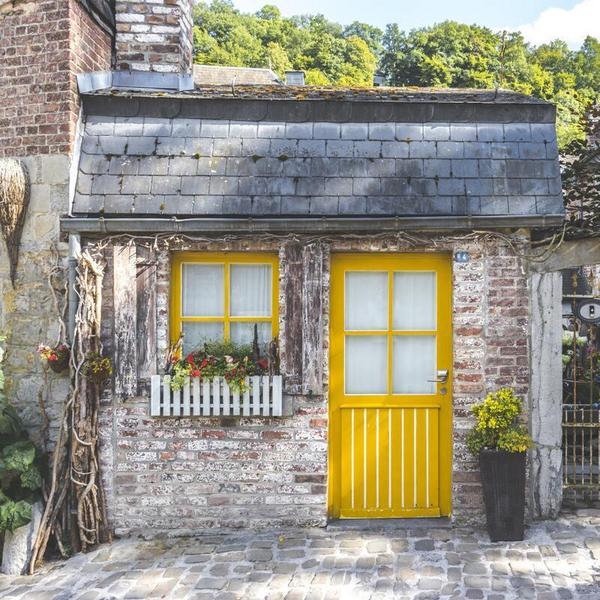You can invest in spray foam insulation for the walls and ceiling, even airtight your windows. But, no matter how energy efficient your tiny house is, when the weather outside is frightful, you need something to heat it up.
Having a heating source in your tiny house is a must, especially if you live in a cold climate region.
However, central heating or a large gas furnace makes little sense in tiny houses, many of which are the size of a regular home living room.
Let’s take a walk through all the tiny house heating options, so you can choose the one that works best for you.
Choose the heater type
Choosing a heater for your tiny house boils down to a few key things, and now we’ll help you with the selection process.
First of all, you need to know whether your tiny house will be on the grid or off the grid.
- If you live on the grid, you have more heating options to choose from, including the most convenient ones - electricity and the heat pump
- If you’re off the grid, you’re pretty much limited to burning wood and fossil fuels.
Electric heating is the cleanest and most convenient, but the cost of electricity might not work in your favor, depending on where you live.
Many future tiny homeowners dream about a wood stove and cracking fire, but they forget that a wood stove means waking up to a cold house every morning before you can stoke a fire up again.
The size of your heating system is another thing to consider. You don’t want a heater that struggles to warm up the entire space, but you also don’t want to open windows in winter months to cool down your home.
An optimum thermal output for tiny house heaters is about 3,000 BTUs. You can use this BTU (British Thermal Units) calculator to give you the correct estimate for your square footage.
Now let’s look at the options.
Electric heaters
An electric heater is the easiest to use and probably has the lowest upfront cost. Electric heating requires you to be on the grid because solar panels can’t generate enough energy to run a heater.
Most electric space heaters start at 1,500 watts for around 5,000 BTUs and go up from there.
Technically, you could run that on solar energy, but you’d have to invest in a rather expensive and large solar array and a huge battery bank. Not feasible.
Another great thing about electrical heaters is that you can find plenty of them for less than $50 at any big box retailer.
Now let’s run through the two major electric heater types:
Forced air heating: Ideal for heating up the space fast but has a pretty loud fan. The way these heaters work is by blowing air over electric heating coils to generate a hot air stream. This mechanism is similar to how Lexington water heaters efficiently circulate hot water through your plumbing system for consistent heating. Great for when you come home from work and want to get warm ASAP. If you are often out and about, this is a good option because you turn it on and have instant heat or turn down the power while you’re gone.
Radiant heating: This type of heater is noiseless and worth considering if you can take the time to let your tiny house heat up. Radiant heaters include oil radiators and infrared heaters. If you’re on the grid and spend a lot of time in the house, a radiant heat burner like this Dreo Space Heater is a good option, as you can heat the house up and let it coast.
Electric heaters pros and cons
Pros:
- Inexpensive
- Widely available
- No installation
- Choose the right BTU size for you
Cons:
- Takes up floor space
- Not very decorative
- Draws a lot of electrical energy
- Not practical off the grid
Wood and pellet stoves
A wood stove is an ideal option for a tiny house owner who lives in the country and enjoys preparing firewood.
But there’s more to wood stoves than the woodsman lifestyle.
Get the fire burning, and you can quickly heat water on top for tea or dishwashing.
If the power lines break and electricity goes out in the dead of winter, you have no problem keeping your tiny house warm and heating food.
Finally, nothing compares to the sound and smell of a fire burning away through the evening. Many of these stoves, including this Ashley Hearth AW1120E are immensely good-looking with cast iron cases and nickel hardware.
On the other hand, wood stoves can get messy. You need to take out the ash and deal with wood chips and bark trailing on your floor.
Things you need to consider before getting a wood stove
The right size
A wood stove doesn’t have a thermostat to turn the heat up or down. If you don’t size it right, you’ll feel as if roasting inside your tiny house. This can be a problem because it’s hard to find a tiny house wood stove that is small enough.
Available space
Wood stoves require significantly more space than portable space heaters, not just in size but also in clearance. Proper wood stove installation requires you to leave enough space around to make sure something doesn’t catch on fire.
Your lifestyle
Wood stoves need a lot of attention. You need to chop and stack firewood, haul it inside, not to mention clean the stove hearth. There’s quite a bit of work, and it can get messy if the soot gets out. A pellet stove is much easier to use, and you can maintain your preferred temperature more easily.
Wood stove pros and cons
Pros:
- Cracking fire
- Low impact on the environment
- Can be used for cooking
- Firewood is cheaper than electrical energy
Cons:
- Higher purchase price
- Needs plenty of clearance
- Hard to find a small one
- Need maintenance
Propane heaters
If you own a tiny house on wheels, you should consider getting a propane heater. Propane gas heaters burn clean, they are relatively inexpensive and easy to find.
When compared with wood stoves, they take up much less of your living space while producing dry heat.
On top of it, propane tanks are also pretty cheap. You can expect to spend around $100 per year heating the house and cooking.
Some of those propane heaters, like this Dyna-Glo 10K BTU are made to be portable and use 1lb propane canisters. You can always get a 20lb propane tank connector hose and instead use 20lb propane tanks that you can get filled almost anywhere.
You can get the tanks refilled almost anywhere.
However, propane heaters are not very environmentally friendly. Propane releases a cocktail of combustion gasses, including carbon dioxide, carbon monoxide, and methane.
If you choose a propane heater for your tiny house, make sure to get a carbon monoxide detector as well.
Propane heater pros and cons
Pros:
- Burns very clean
- Easy to control
- Great energy savings
Cons:
- Uses fossil fuels
- Carbon monoxide as a byproduct
- Less environmentally friendly power source
Heat pumps
A heat pump is one of the most popular options for people who live on the grid, as pumps are getting more and more efficient. However, it shouldn’t be your primary source if you have a few colder months because a heat pump captures any available heat from the air and concentrates it to heat your home. Sure, most of them have electric heating elements to boost the system once the temperature drops to below 30 degrees, but that’s back to regular electric heating.
A huge bonus of heat pumps is that they provide both heating and cooling for your tiny house. If you get a mini split, you can mount the air handling unit on the wall so it doesn’t take up any additional space. The Goodman 2.5 Ton 14 SEER heat pump comes with a thermostat and an excellent humidity control feature.
However, it’s crucial to ensure the efficient operation of your heat pump by performing regular maintenance. This includes tasks such as cleaning filters and coils, checking for signs of wear and tear, and scheduling professional heat pump maintenance when needed. Proper maintenance not only enhances the longevity, but also ensures optimal performance throughout its lifespan.
Heat pump pros and cons
Pros:
- Very efficient
- Can both heat and cool
- Takes no floor space
- Thermostat controlled
Cons:
- High initial cost
- Needs expert help to set up
- Doesn’t work well in really cold climates
Tiny house heater comparison table
Let’s now take a look at how these four options stack against each other.

Wrapping up
Tiny houses have tiny heating needs when compared to traditional homes. However, the need for comfort and coziness still remains.
If you’re looking for a rustic home feel, a wood stove is hard to beat whether you live off the grid or not. If you want convenience and practicality, your best choice is an electric heater.
If you move around a lot and don’t have access to the grid all the time, a propane heater is your best buy.
On the other hand, if your home has a permanent foundation, and you have all four seasons where you live, a heat pump is probably the best choice as you can use it to cool down your tiny house in the summer.


